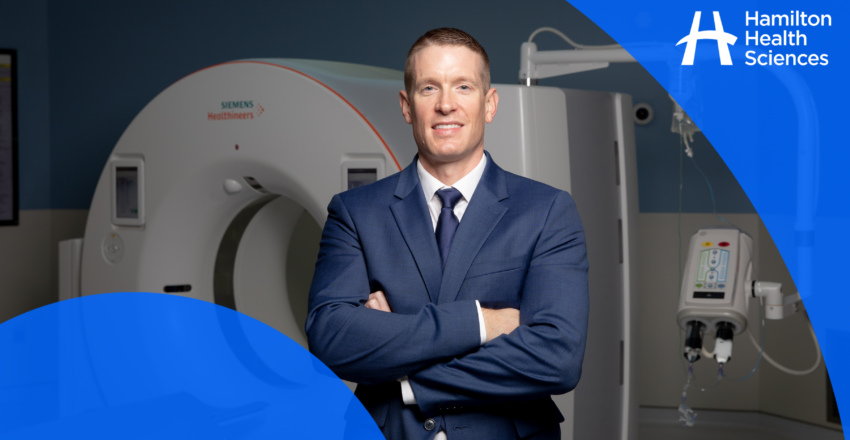How Jefferson County Health Center saved 1,000+ Hours While Improving Patient Satisfaction by 7.6%
June 21, 2024
Read More
A 14-day report delay from the date of an exam: Even if imaging was ready to view and reports were finalized, they weren’t sent to patients until two weeks after the exam.
Prior to implementing PocketHealth, patients at Hamilton Health Sciences (HHS) were still receiving their imaging on CDs. The multi-site hospital, which performs 700,000 scans in Southwestern Ontario every year, had one of the strictest systems in place when it came to delivering test results to patients.
Consequently, patients had to come back to the hospital after two weeks to pick up their CDs. Meanwhile, staff were tasked with managing CD-burning systems and notifying patients when their records became available. Patients grew frustrated with wait times which impeded their ability to schedule necessary follow-up appointments.
Then, in April 2019, HHS took a more patient-centric approach to healthcare and partnered with PocketHealth. The platform alleviated clinic staff from burning CDs while patients no longer had to travel back to the facility to retrieve their imaging records. Although the PocketHealth platform was designed to give patients instant access to their imaging data, HHS maintained a delay on releasing this information by 14 days following the date of an exam.
“We had one of the more stringent delays for reports and images,” says Shaun Smith, Business Manager of Diagnostic Services for HHS. “One of the biggest challenges for us was that for anybody who required their imaging within two weeks — which can be a lot of people — we would still have to burn [a CD] for them.”
The delay was intended to give physicians time to review any troubling test results before they could be seen by patients. It was also meant to give employees a little leeway to ensure the right reports were being sent to the right people. But what might have been a good idea in theory proved painful in practice for patients who needed their results as soon as possible. The only way for them to access scans within the two-week window was by contacting the hospital, paying for the images to be burned onto a CD and picking it up themselves.

Going from 14 days after the exam date to zero delay (imaging and reports were made available as soon as they were ready): HHS informed PocketHealth that they wanted to remove all delays.
By doing away with the two-week delay, HHS transitioned to a more patient-friendly framework, with a little help from PocketHealth. The platform sends an automated notification to patients as soon as their imaging results are ready, a feature that removes a major pain-point in communication for everyone involved.
“We heard loud and clear from our patients that they want to have those results, they want to have that access right away,” Smith says. “So really, it was a patient-centered decision that we took to our medical advisory committee and they were all in favor of it.”
Now, instead of traveling back to the hospital to pick up a CD during the two-week window, patients instantly receive their results on their phone and can share them with anyone who needs to see them. “The biggest benefit of providing that immediate access to patients is that they can take their imaging to wherever it is that they need to take it and they know when their results are ready,” Smith says. And if patients don’t have a follow up with their GP, they can schedule one themselves knowing their results are ready. “It’s an extra piece of mind — it adds an extra layer or safety net for the patient and for them to be aware of their imaging results.”
A growing number of providers are following suit and removing similar delays because they create barriers to the delivery of healthcare and add unnecessary friction to staff workflows. Patients who aren’t able to access their results quickly are more likely to call their providers, placing an additional burden on already strained systems. To complement PocketHealth’s patient-centered approach to imaging records, HHS also implemented an electronic health record (EHR) portal to give patients access to non-imaging related information such as their lab test results, medications and immunization records.

HHS saw significant improvements to patient experience and patient satisfaction and staff spent less time fielding calls or burning CDs.
Removing the delay at HHS has empowered patients to take charge of their own health by giving them the ability to instantly access their own results. After the delay was dropped, HHS experienced a 52 percent decrease in patient support tickets, a development that has made life a little easier for the hospital’s hard-working staff and enabled them to redirect their efforts toward supporting other areas of the system.
Patients are already seeing the benefits in a variety of ways. “A very good example of this is, say, an expecting mother who had an ultrasound and wants to share pictures of her baby with her family,” Smith says. “They don’t have to wait two weeks anymore.”
The hospital is now performing on par with, or better than, other peer organizations, some of which still maintain a one-week delay. This may not seem like a long period of time, but patients remember every interaction they have with a health network — even administrative and virtual interactions.
At HHS, everyone is happy now that the delay has been dropped. “Previously, the staff were getting some calls saying, ‘Hey, I can’t get my images’ and we would have to say it was because of our 14-day delay,” Smith says. “I think the staff are pleased they don’t have to burn as many CDs or receive calls regarding the same issue that’s out of their control.”